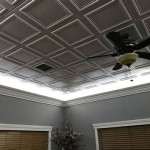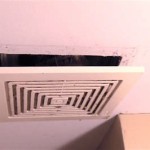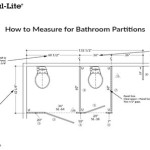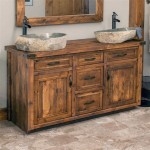Can You Use a Dresser As Bathroom Vanity Sink?
Repurposing furniture is a common practice in interior design, driven by a desire for unique aesthetics, cost-effectiveness, and environmental consciousness. Using a dresser as a bathroom vanity sink is a popular example of this trend. While seemingly straightforward, adapting a dresser for this purpose involves careful planning, modification, and adherence to specific plumbing and safety considerations. This article explores the feasibility, benefits, challenges, and practical steps involved in transforming a dresser into a functional bathroom vanity.
The appeal of using a dresser as a vanity sink stems from several factors. Dressers often offer ample storage space, a feature particularly valuable in bathrooms that tend to be smaller than other rooms in the house. Their aesthetic diversity allows homeowners to choose a style that complements their overall bathroom design, ranging from rustic and vintage to modern and minimalist. Moreover, repurposing an existing dresser can be more budget-friendly than purchasing a new, custom-built vanity, especially if the dresser is already owned. Finally, it aligns with sustainable living principles by giving a second life to a piece of furniture that might otherwise be discarded.
However, transforming a dresser into a bathroom vanity is not merely a cosmetic alteration. It necessitates significant structural modifications to accommodate plumbing, protect the wood from moisture, and ensure the vanity is both functional and durable. Failure to address these aspects can lead to water damage, mold growth, and ultimately, a compromised bathroom environment.
Assessing Dresser Suitability and Preparing for Modification
The first step in this process is to evaluate the suitability of the dresser itself. Not all dressers are created equal when it comes to repurposing them for bathroom use. The material of the dresser is a crucial factor. Solid wood dressers are generally preferred because they are more durable and can withstand the moisture exposure inherent in a bathroom environment better than particleboard or MDF (medium-density fiberboard) dressers. While particleboard and MDF can be used, they require significantly more sealing and protection to prevent water damage and swelling.
The dresser's dimensions also play a critical role. Consider the available space in the bathroom and ensure the dresser's size is appropriate. A dresser that is too large will overcrowd the room, while one that is too small may not provide adequate storage or counter space. Standard bathroom vanity heights typically range from 30 to 36 inches. If the dresser is shorter than this, consider adding legs or a platform to raise it to the desired height. Conversely, if the dresser is too tall, the top drawers might become unusable after the sink is installed.
Finally, the dresser's structural integrity must be assessed. Check for any existing damage, such as warped wood, loose joints, or insect infestations. Repair any damage before proceeding with the modification. A weak or unstable dresser will not be able to support the weight of the sink, countertop, and plumbing.
Once a suitable dresser has been identified, the next step is to prepare it for modification. This involves removing the drawers, cleaning the dresser thoroughly, and sanding down the surfaces to create a smooth, even base for painting or sealing. If the dresser has an existing finish, it may need to be stripped using a chemical stripper or sanding.
Modifying the Dresser for Plumbing and Sink Installation
The most challenging aspect of transforming a dresser into a vanity is adapting it to accommodate the plumbing. This requires careful planning and precise execution. The first step is to determine the location of the sink and the placement of the drainpipe and water supply lines. The sink's dimensions will dictate the size of the hole that needs to be cut in the dresser's top to accommodate it.
Using a template or the sink itself, trace the outline of the sink onto the dresser's top. Then, use a jigsaw to carefully cut out the hole. It is advisable to start with a smaller hole and gradually enlarge it until the sink fits snugly. This allows for minor adjustments and minimizes the risk of cutting the hole too large.
Next, create pathways for the drainpipe and water supply lines. This typically involves cutting holes in the back of the dresser and potentially modifying the drawers to allow for the plumbing to pass through. Ensure these holes are large enough to accommodate the pipes without putting undue stress on them. Using a hole saw is often the most effective way to create clean, round holes for the plumbing.
If the drawers need to be modified, consider cutting notches or removing sections of the drawer backs or sides to accommodate the pipes. Reinforce the remaining drawer structure with wood glue and screws to maintain its integrity. Consider using drawer organizers or dividers to maximize the usable space around the plumbing.
Before installing any plumbing, consider adding a countertop to the dresser. This is particularly important if the dresser's top is not made of a water-resistant material. A countertop can be made of various materials, including granite, marble, quartz, or even sealed wood. Choose a material that complements the dresser's style and is durable enough to withstand the rigors of a bathroom environment. Secure the countertop to the dresser using construction adhesive and screws.
Protecting the Dresser from Moisture and Completing the Installation
Protecting the dresser from moisture is paramount to ensuring its longevity and preventing mold growth. This involves applying multiple coats of a water-resistant sealant to all exposed surfaces, including the interior of the drawers and the back of the dresser. Polyurethane sealant is a popular choice for this purpose, as it provides a durable, waterproof finish. Apply several thin coats of sealant, allowing each coat to dry completely before applying the next.
In addition to sealing the wood, consider lining the interior of the dresser with a waterproof material, such as plastic sheeting or vinyl. This will provide an extra layer of protection against spills and leaks. Attach the lining to the dresser using adhesive caulk.
Once the dresser has been properly sealed and protected, the plumbing can be installed. Connect the drainpipe to the sink's drain and the water supply lines to the faucet. Ensure all connections are tight and leak-free. Use plumber's tape on threaded connections to prevent leaks. After connecting the plumbing, test it thoroughly by running water through the sink and checking for any leaks. Address any leaks immediately to prevent water damage.
Finally, install the sink and faucet according to the manufacturer's instructions. Secure the sink to the countertop using silicone caulk to create a watertight seal. Reinstall the drawers, ensuring they slide smoothly and do not interfere with the plumbing. Consider adding decorative hardware, such as new drawer pulls or knobs, to complete the transformation.
Adapting a dresser for usage as a bathroom vanity sink is an achievable project that combines creativity with practicality. Paying close attention to the selection of appropriate materials, ensuring meticulous modifications for plumbing, and prioritizing effective moisture protection are critical steps to achieving a successful and enduring outcome.

How To Make A Dresser Into Vanity Tutorial An Oregon Cottage

Stunning Bathroom Tour Dresser Into Double Vanity

Repurposed Dresser Converted To Bathroom Vanity Reinvented Delaware

Turn A Vintage Dresser Into Bathroom Vanity

A Pro Renovator S 6 Tips For Turning Dresser Into Bathroom Vanity

Mid Century Dresser Into Vanity Bright Green Door

Flipping Houses Home Renovation In Silicon Valley

Repurposed Dresser Converted To Bathroom Vanity Reinvented Delaware
/103058794-9279662b921c41259cb908f3cb19acd9.jpg?strip=all)
How To Turn An Old Dresser Into A Beautiful Bathroom Vanity

Repurposed Dresser Converted To Bathroom Vanity Reinvented Delaware
Related Posts







